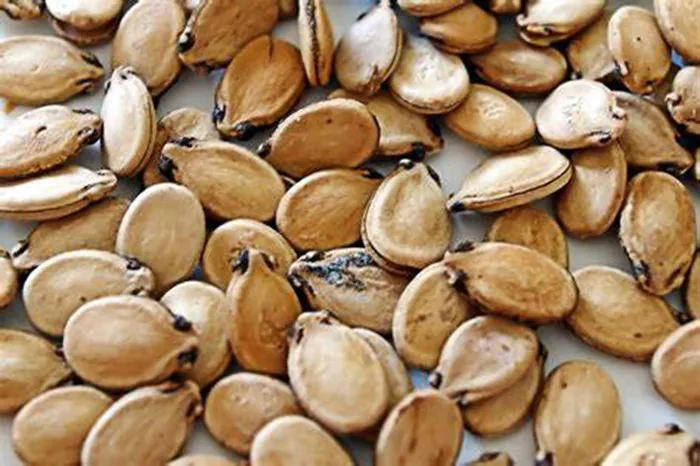Wild sunflower seeds are nature’s hidden treasures, often overlooked but brimming with potential. These seeds, nestled within the iconic sunflower head, are not only a vital part of the plant’s reproductive cycle but also a valuable food source for wildlife and humans alike. Their appearance, though small, tells a story of resilience and adaptability. From their shape and color to their role in the ecosystem, wild sunflower seeds are worth a closer look.
The Appearance of Wild Sunflower Seeds
Shape and Size
Wild sunflower seeds are typically small, elongated, and slightly flattened. They resemble tiny, dark ovals, with a length of about 5 to 10 millimeters and a width of around 2 to 3 millimeters. The seeds are often slightly curved, following the natural spiral pattern of the sunflower head. This shape allows them to fit snugly together, maximizing the number of seeds that can be packed into the flower’s center.
Color and Texture
The color of wild sunflower seeds is usually a dark gray or black, with fine white stripes running lengthwise. These stripes give the seeds a unique, almost marbled appearance. The surface of the seed is smooth but firm, providing a protective layer for the embryo inside. This tough outer coating helps the seed survive harsh conditions, such as drought or cold, ensuring it can germinate when the time is right.
Seed Head Structure
Wild sunflower seeds are found within the flower’s central disk, arranged in a mesmerizing spiral pattern. This arrangement is not just aesthetically pleasing; it is also highly efficient. The seeds are densely packed, with each one positioned at a specific angle to maximize space and sunlight exposure. The outer seeds are larger and more exposed, while the inner seeds are smaller and more protected. This structure ensures that the seeds have the best chance of survival and growth.
The Lifecycle of Wild Sunflower Seeds
Formation and Maturation
The journey of a wild sunflower seed begins with the flower’s bloom. As the sunflower matures, its petals wither, and the central disk swells. Inside, the ovules develop into seeds, nourished by the plant’s nutrients. Over several weeks, the seeds grow and harden, their color deepening from a light green to the dark hues seen in mature seeds. When the back of the sunflower head turns yellow and brown, the seeds are ready for harvest.
Dispersal and Germination
Wild sunflowers have evolved various strategies to disperse their seeds. Wind, animals, and even water can carry the seeds away from the parent plant. Birds and small mammals are particularly fond of sunflower seeds, often eating them and inadvertently spreading them through their droppings. Once dispersed, the seeds can remain dormant in the soil for months or even years. When conditions are favorable—warm temperatures, adequate moisture, and sufficient sunlight—the seeds germinate, sprouting new sunflower plants.
Cultural and Ecological Significance
Wildlife Importance
Wild sunflower seeds are a crucial food source for many species. Birds such as finches, chickadees, and jays rely on them for sustenance, especially during the winter months when other food sources are scarce. Small mammals like squirrels and chipmunks also feast on sunflower seeds, storing them for later use. Insects, too, benefit from the seeds, either by feeding on them directly or by using the sunflower plant as a habitat.
Human Uses
For humans, wild sunflower seeds offer both culinary and medicinal benefits. They are rich in nutrients, including protein, healthy fats, vitamins, and minerals. Sunflower seeds can be eaten raw, roasted, or ground into flour. They are also used to make sunflower oil, a popular cooking oil known for its high smoke point and mild flavor. In traditional medicine, sunflower seeds have been used to treat various ailments, from respiratory issues to skin conditions.
Growing Wild Sunflowers from Seeds
Soil and Climate Requirements
Wild sunflowers thrive in a variety of soil types but prefer well-drained, loamy soil. They are hardy plants that can tolerate drought and poor soil conditions, making them suitable for many climates. Sunflowers require full sun, needing at least six to eight hours of direct sunlight per day. They are also relatively frost-tolerant, though extreme cold can damage young seedlings.
Planting and Care
To grow wild sunflowers from seeds, sow them directly into the ground in the spring, after the last frost. Plant the seeds about half an inch deep and space them 6 to 12 inches apart. Keep the soil moist but not waterlogged until the seeds germinate, which usually takes one to two weeks. Once the seedlings emerge, thin them out to ensure they have enough space to grow. Sunflowers are relatively low-maintenance, but they do benefit from regular watering and occasional fertilization.
Harvesting Seeds
If you wish to harvest sunflower seeds, wait until the back of the flower head turns yellow and the seeds are fully mature. Cut the flower head off the stem, leaving a few inches of stalk attached. Hang the head upside down in a dry, well-ventilated area to allow the seeds to dry out further. Once dry, you can remove the seeds by gently rubbing the flower head with your hands or using a soft brush.
Conclusion
Wild sunflower seeds may be small, but they hold immense value. Their unique appearance, from their elongated shape to their striped coloration, is a testament to nature’s intricate design. These seeds play a vital role in the ecosystem, supporting wildlife and offering benefits to humans. Whether you are a gardener looking to grow sunflowers or simply an admirer of nature’s wonders, wild sunflower seeds are a fascinating subject. They remind us of the beauty and resilience of the natural world, one tiny seed at a time.


